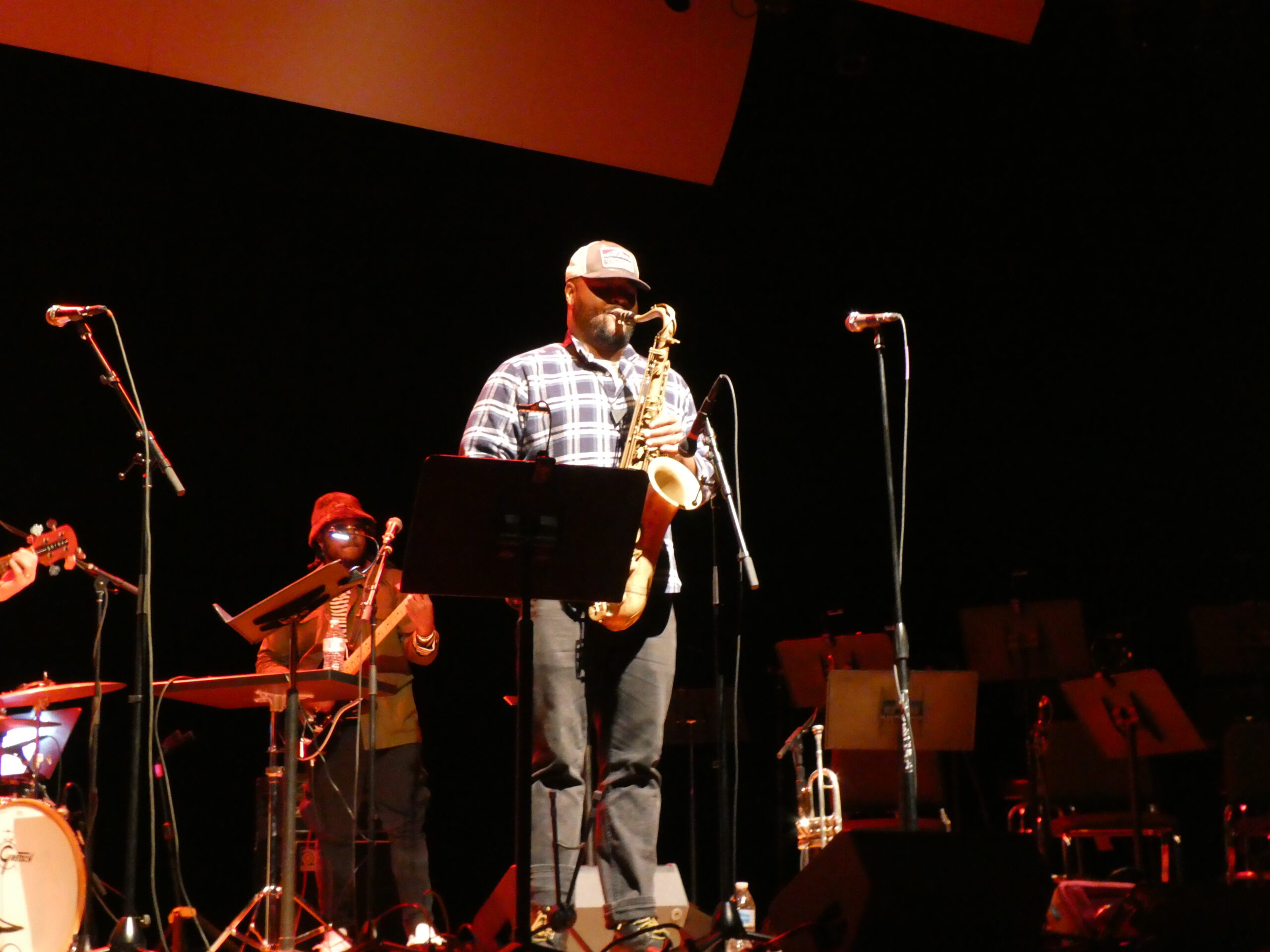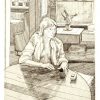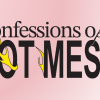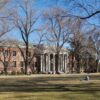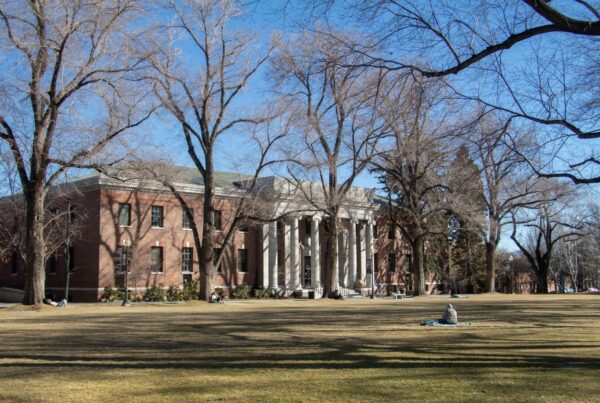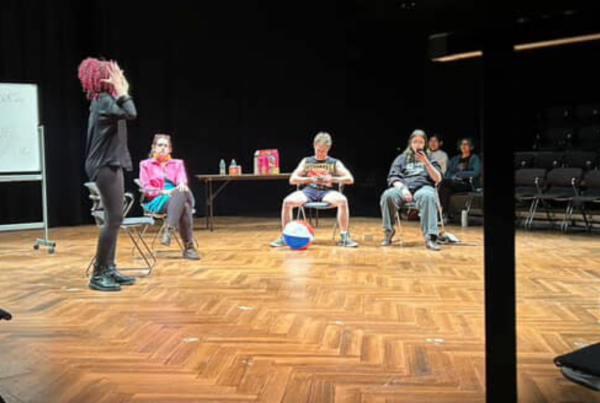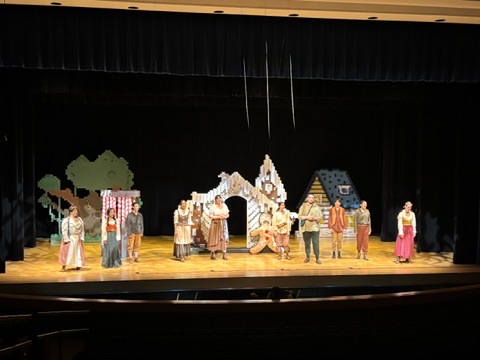A nearly-full, fairly energetic auditorium greeted the jazz fusion band Butcher Brown for their concert in Nightingale Concert Hall on Oct. 12.
Their visit comes as part of the Performing Arts Series, an annual concert line-up that brings eclectic musiciansto the University of Nevada, Reno. Last year, a Koto-fronted ensemble kicked off the series. This year, forthcoming concerts promise an accordion, an Erhu — that would be a Chinese two-stringed violin — and an oud — a member of the lute family with origins in Iran.
Butcher Brown is a five-piece ensemble with vocals, guitar, bass guitar, keyboard, drums and, depending on the song, trumpet or saxophone. With the help of recorded beats and a touch of textured synth, the band produces fluid, expansive live pieces with instruments you can find aplenty in the music department here already.
But their contribution to the Performing Arts Series was a memorable one. Rather than bring uncommon sounds to Nightingale Concert Hall, they packaged familiar ones with expert precision. Their live performance drew on vocals from hip-hop, percussion from jazz and production techniques from ambient and lo-fi electronic music — elements which many of us are used to absorbing passively in coffee shops or Spotify study mixes. Here, though, listeners got a gratifying taste of what it means to give these styles full attention. It was equal parts calming and energizing, and all satisfying.
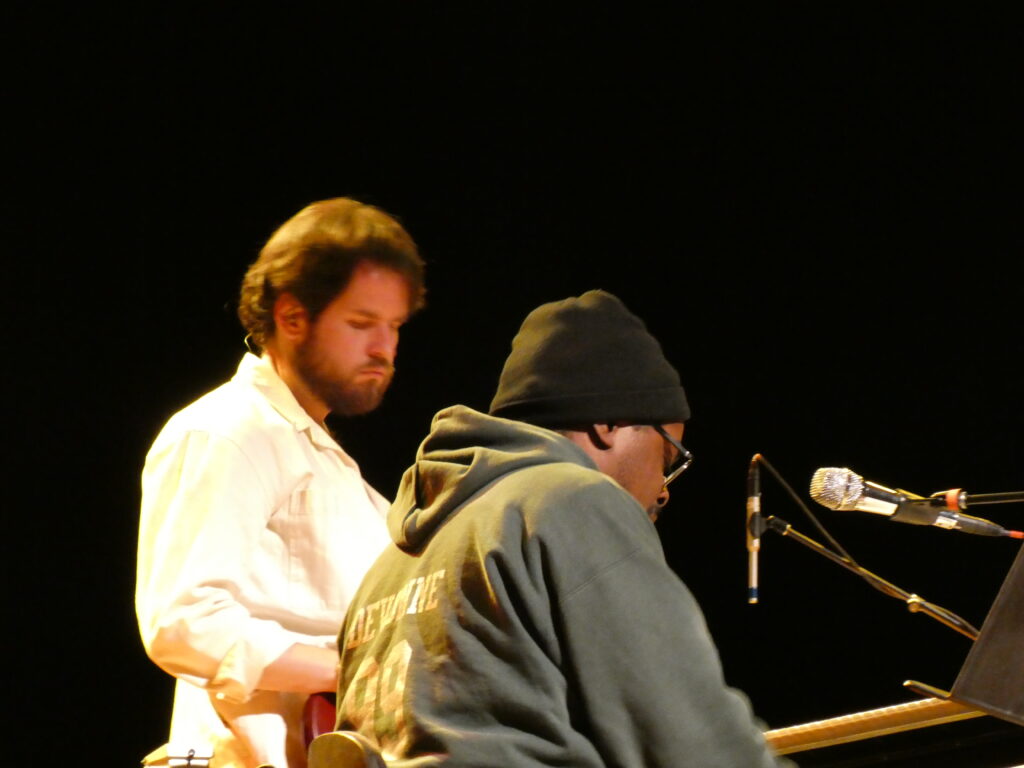
Andrew Randazzo on bass (left) and DJ Harrison on keyboard (right).
This is partly thanks to good old-fashioned musical technique. Lead vocalist and trumpet/saxophone player Marcus “Tennishu” Tenney was crisp as autumn air on brass, and bassist Andrew Randazzo handled intricate bass lines with effortless verve.
But much of Butcher Brown’s standout live sound came from something that was clear from their unfussy stage wardrobe of loose button-up shirts, hoodies and thick-framed glasses: they’re nerds.
They adjusted their onstage equipment constantly and with the fastidiousness of AV geeks. Randazzo crouched to turn dials between and sometimes during songs; Tenney frequently positioned and re-positioned his microphones. Their wire-infested setup corralled them into less than half of the stage, feeding a casual studio vibe that had audience members and performers alike nodding heads and tapping feet. All the energy that would otherwise go into a carefully-crafted stage presence fed the band’s obsession with sound.
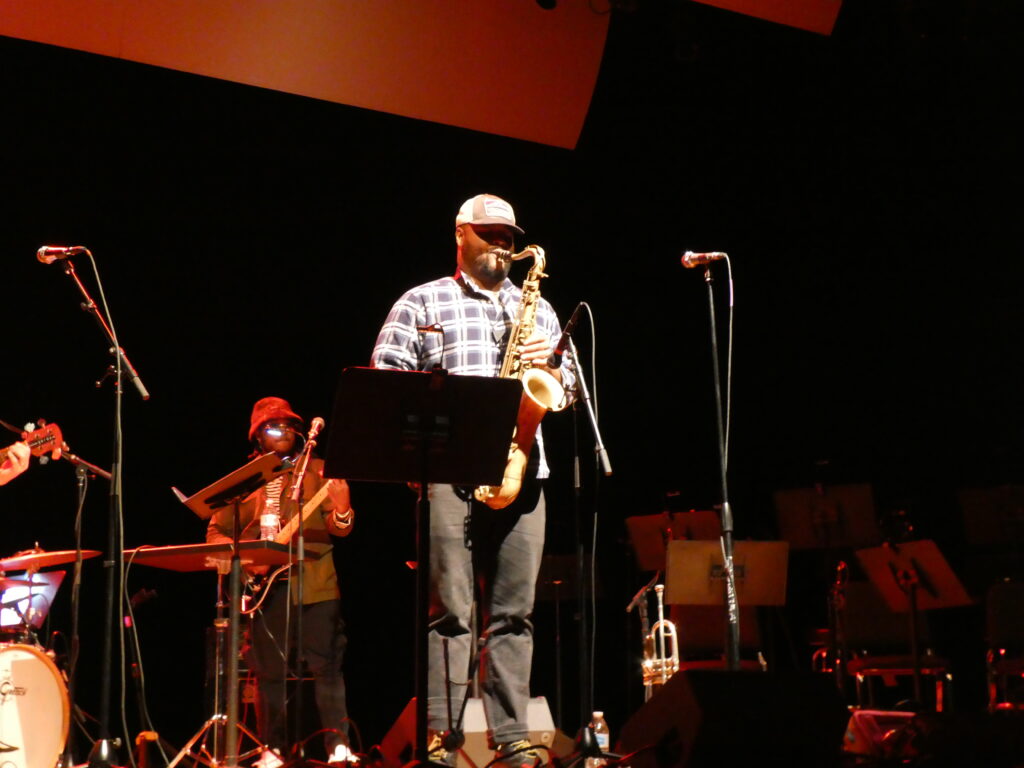
Marcus “Tennishu” Tenney bounced between saxophone and trumpet during the Oct. 12 concert. Morgan Burrs (left) brought compelling intricacy to guitar.
It showed in the music, too. Drummer Corey Fonville contributed multi-dimensional, complex percussion with a sharp edge. Fonville’s rhythms were fabulous, but they were also mixed to perfection: more than loud enough to command attention, but nowhere near overpowering.
The mixing of Tenney’s trumpet playing also nailed a delicate balance. As brass aficionados know, trumpets really stick out, and in traditional brass bands, cornets generally take their place for this very reason. For Tenney’s trumpet solos not to completely drown out everything else in the ensemble, the onstage musicians and the backstage sound crew had to be extremely on their guard.
Extra touches — like a warm fuzz added to Randazzo’s bass in imitation of vinyl record static — rounded out the band’s impressive technical balancing act.
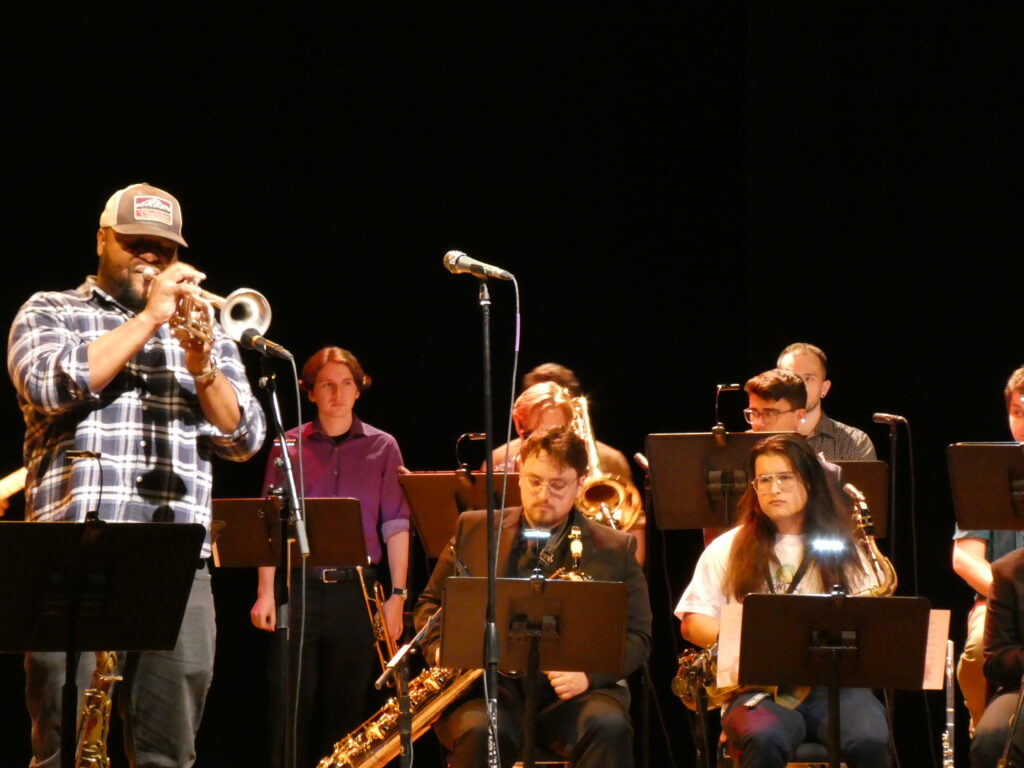
Tenney (left) plays a trumpet solo with UNR student accompaniment.
For the second half of the concert, the University’s own Jazz Lab I filed into plastic chairs on the other side of the stage.
Jazz Lab I, which consists of experienced undergraduates, contributed supporting material with horns, saxophones and more to pieces further back in Butcher Brown’s catalog. A fuller brass ensemble brought a body to the band’s music that added to it in subtle but powerful ways, informing a wider palette of moods than the concert’s first half, from suspense to bravado.
The student trombones were standouts, especially for the propulsive finale. An encore, the piece combined a relentless march of percussion and horns with a powerful supporting role for flute.
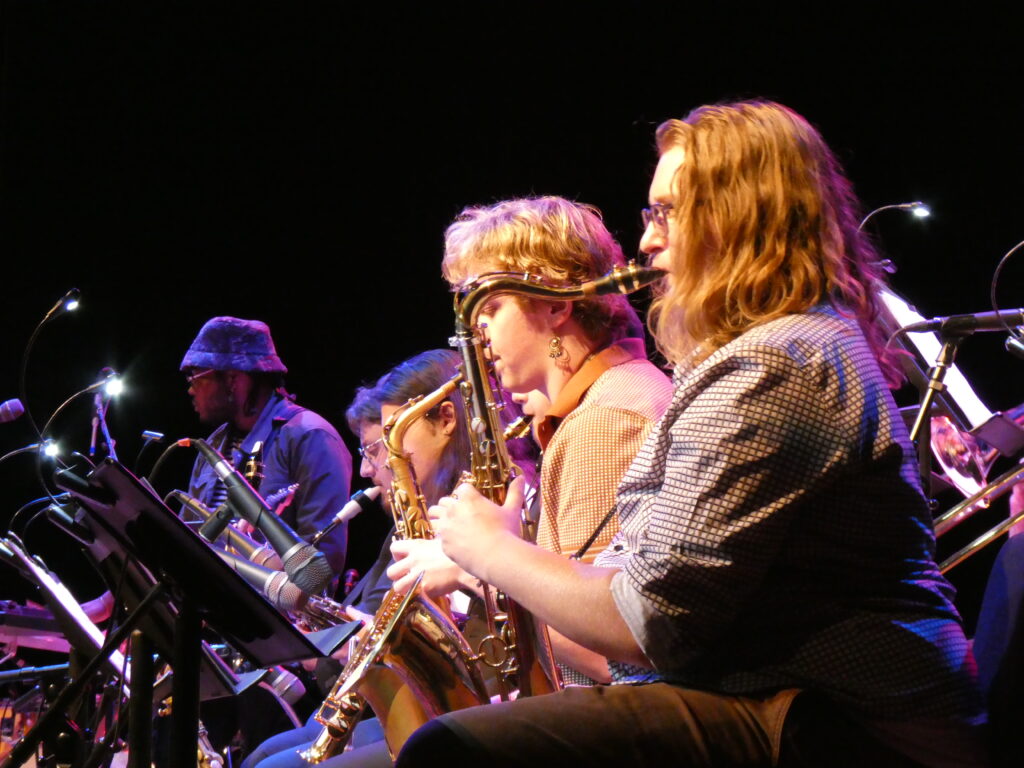
A row of student saxophone players from Jazz Lab I.
It’s no secret that the music program here has skill, but it was an almost breathless experience to watch its promising students stretch into new forms, momentarily shedding the traditional brass-band sound into which they’d been trained for something riskier and more dynamic.
That’s a transition that all artists have to make before their discography can really be their own. Perhaps, with inspiring visits to the school’s venues and the Performing Arts Series’ emphasis on collaboration in hand, University musicians in the audience and on stage can make that transition a little sooner.
The Performing Arts Series continues this month with guest artists Krakauer & Tagg.
Peregrine Hart can be reached via email at peregrineh@unr.edu, or on Instagram @pintofperegrine.

